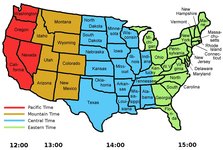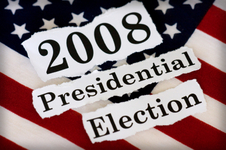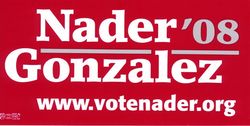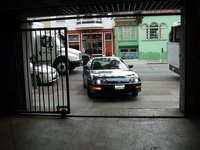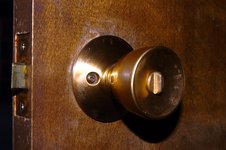 |
| Angelika/Mike Schilli |
|
Michael It has become less common now, but it still happens that someone from Germany calls us in the middle of the night and then wonders loudly why we don't answer the phone and they get the answer machine instead. San Francisco is nine hours behind Germany in terms of time. So if someone in Germany thinks at noon, hey, I'll quickly call Angelika and Michael, then it's three o'clock in the morning here. That's why we have set our phone silent.
Americans have fewer problems with time zones, because they're growing up with them. The time difference between the East and West coast is three hours. So, when the stock exchange opens in New York at 10am local time, it's still 7am here and I'm sitting in my pajamas in front of the computer typing in my stock purchases. When it's five o'clock in the afternoon here, I would never think of calling someone in New York in the office, because there it's already 8pm and people have gone home for the day. On New Year's Eve, the New Year's countdown in New York comes to us at 9pm on TV. Spooky!
There are a total of four different time zones: Pacific Time (PST, West Coast), Mountain Time (Denver +1), Central Time (Ohio +2), and Eastern Time (EST, +3, East Coast). So if it's noon in San Francisco, it's 1 PM in Denver, 2 PM in Ohio, and 3 PM in New York.
The main air time for TV shows is a 8pm, but by the time it's 8pm in San Francisco, the New Yorkers are already sitting in front of the TV with their nightcaps on, since it's already 11pm there. In order to maximize advertising revenue, popular TV series must run at 8pm local time, so the TV stations feed the movie into the cable multiple times: once at 8pm on the East Coast and then again with a three-hour delay on the West Coast.
When announcing new television shows nationally in newspapers (see Figure 2) or on billboards, it often says something like "Fridays 8/7c" as air time. This means that the cable companies broadcast the show at 8 PM Eastern Time and then three hours later, at 8 PM Pacific Time, again. Americans don't use a 24-hour clock, so they say "8" instead of "8 PM". Even without the addition of "pm", it is clear in this case that it is not a show at 8 AM. And the "8" in this case refers to both the East and West coasts, as it is two different broadcasts! However, this fact is omitted, the only important thing is that the television viewer knows when to turn on the box. In the "Central Time Zone" there is no extra broadcast for historical reasons, so people in Ohio have to watch the show at 8 PM Eastern Time, which is 7 PM in their time. If someone from Ohio reads the "7c" in the advertisement, they know to ignore the "8" and turn on the TV at 7 PM.
The Mountain Time Zone, however, appears to be so insignificant that the television stations make no mention of it. However, a source in Denver assured me that cable there runs the East Coast broadcast an hour delayed.
For example, let's take the show "The Tonight Show" with Jay Leno, a talk show not unlike the German Harald Schmidt Show. It is recorded daily at 4:30 PM local time (Pacific Time) in the NBC studio in California. The broadcast in New York begins at 10:35 PM local time (Eastern Time). Trivia question: At what time does the mountain man in Denver have to turn on the TV to watch the show? You'll find the answer at the end of this newsletter (Rundbrief 11/2008). For more insights into time zones, on Wikipedia, under Effects of Time Zones on North American Broadcasting there is an extensive explanation of this phenomenon.
